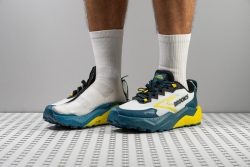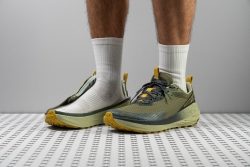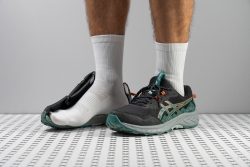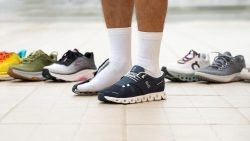7 Best Trail Walking Shoes in 2025

We buy shoes ourselves. We earn commissions when you buy through us, at no extra cost. Why trust us
Be ready, and let the next adventure on the trails begin with these high-performance trail walking shoes. If you like taking a stroll in the woods, like many of us here at RunRepeat, we have the perfect list of walking shoes for you.
From a wide array of known and trusted brands, these walking shoes are perfect for rugged trails and urban pavements. They provide superb traction and even water-repellent technology when needed.
For all your trail walking footwear needs, we’ve rounded up the best trail-ready shoes we have tested. Check out our top recommendations in various categories.
How we test trail walking shoes
To identify the best trail walking shoes, we tested the shoes on the local trails and some rugged paths and we tested them in our lab.
The top-pick selection process involves:
- Buying all pairs of walking shoes for the trails using our own money. This keeps us 100% brutally honest when publishing our in-depth reviews and top rankings.
- Evaluating each model’s actual fit, shock absorption, water-resistance technology, stability, motion control features, grip, and durability through multiple wear tests.
- Cutting trail walking shoes in half and testing them in our lab. This enriches all our shoe reviews with lab data, which adds another layer of objectivity.
Best trail walking shoes overall
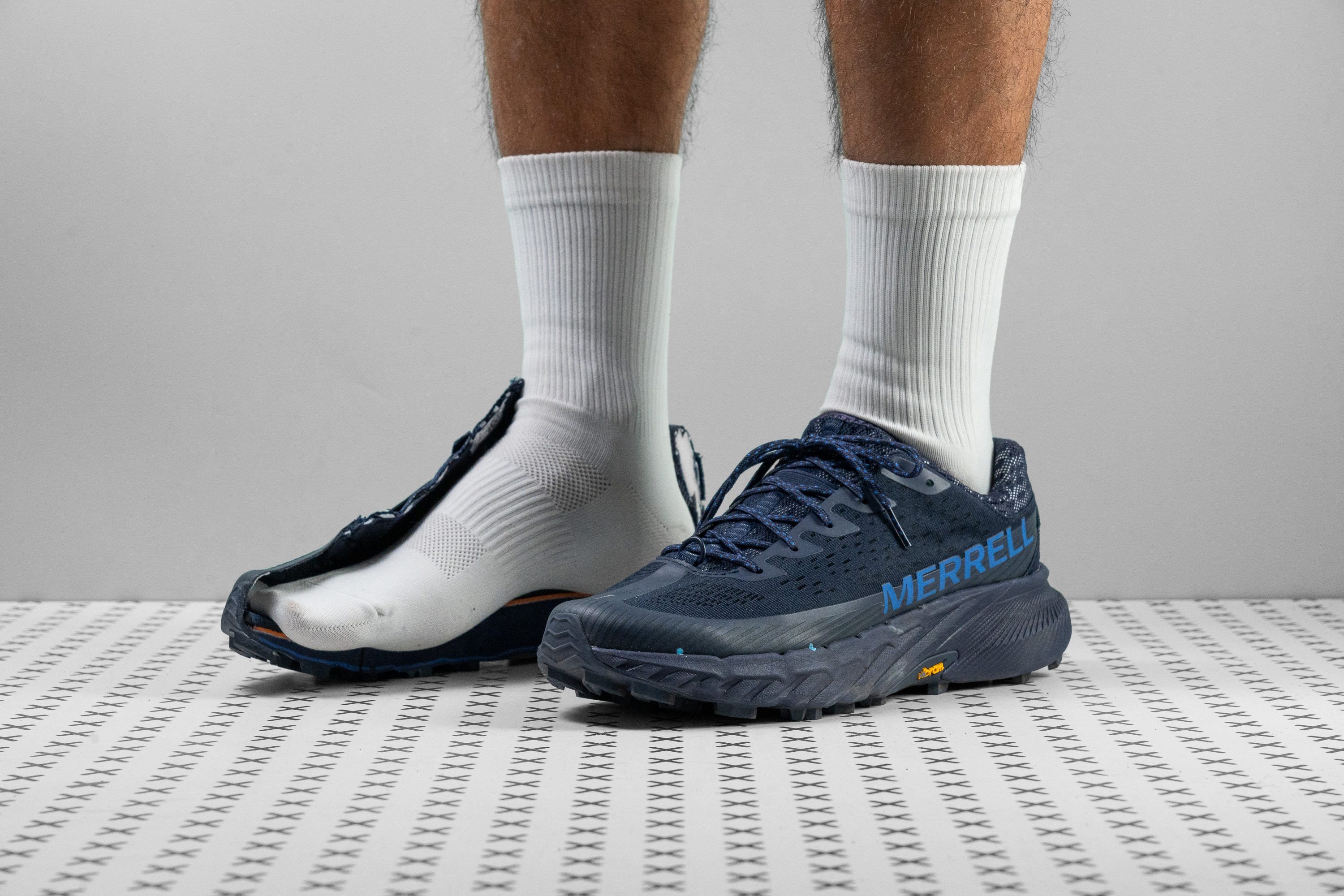















































What makes it the best?
What we enjoyed the most about the Merrell Agility Peak 5 is how it’s built to prevent foot pain and unwanted slips, allowing us to savor the views during our treks. Lab tests reveal its generous cushioning for comfort, while its structured midsole and Vibram outsole do the tough work for us. In the end, it’s our best bet for trail walking.
We measured the stack height at an above-average 39.2/25.8 mm, the heel already in maximalist territory. It took away the harshness of the ground, keeping our joints and muscles free from strain. We confirmed its protective nature with an impressive shock absorption rating of 125 SA in the rear.
To counteract potential instability from its height, the AP5 offers effective foot containment through its broad 93.0 mm heel and its stiff midsole and heel counter. The shoe has structure, so twisting our ankles was out of the picture. In our manual assessment, we gave it the maximum 5/5 torsional rigidity and a solid 4/5 in heel counter stiffness.
The Vibram Megagrip outsole proves its slip-resistance when we encountered loose sand or wet trails. Its deep 4.5 mm lugs offer a strong ground hold, even in soft terrains.
However, its streamlined toebox may cause discomfort to those with broad feet. It's wise to consider a more suitable alternative for these people.
Pros
- Easily handles tough trails
- Performs well on both downhills and uphills
- Extremely durable upper with numerous TPU reinforcements
- Suitable for year-round use
- Loads of recycled, eco-friendly stuff
- Wonderful for heel strikers
- Excellent all-terrain shoe
Cons
- Grips worse than expected
- Actual drop deviates significantly from what's stated
- Feels flat underfoot
- Narrow toebox
Trail walking shoes with the best shock absorption
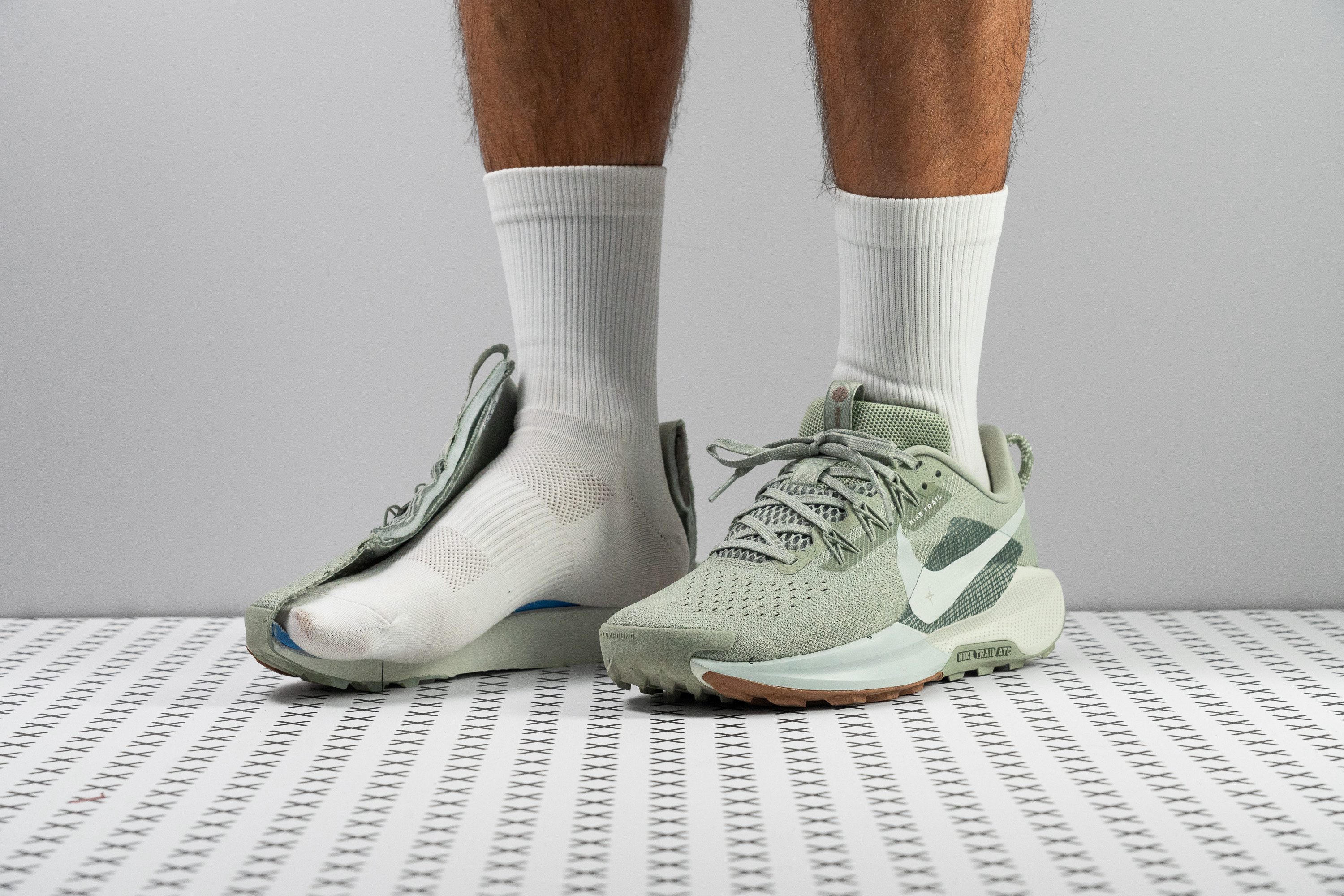






















































What makes it the best?
In our search for the best shock-absorbing trail walking shoe, we looked for a shoe that feels amazingly cushioned yet highly adaptable on various terrains. Based on our time spent outdoors and in the lab, the Nike Pegasus Trail 5 is just that! It does all this with its rugged build, dependable grip, and flexibility.
We found it perfect for spending full days on our feet. It's plush underfoot without being too tall. Our shock absorption test confirms a high rating of 136 SA, making it 11.5% more protective than average.
What seals the deal is that we could easily maneuver through unpredictable paths! No wonder, given that it's 8.9% more flexible than the average walking shoe based on our bend test. The 3.2 mm lugs also helped us feel more secure in the shoe.
Testing for the All-Terrain Compound’s wear resistance using our Dremel, it emerged victorious with a minimal 0.8 mm dent. Even in the toebox and heel padding, it proved its resilience with top ratings of 5/5 and 4/5, respectively. We had no worries dealing with harsh elements outdoors because this shoe will keep us safe.
However, we do not recommend Pegasus Trail 5 to those who live in warm climates. As shown in our breathability test, this shoe is less breathable than average. Hello, sweaty feet!
Pros
- Fully gusseted tongue
- Reflective elements
- Durable upper construction
- New rockered sole
- Great for heel strikers
- Reasonably priced
- All-around comfort
Cons
- Weight increase
- Possibly too plush for trails
- Still lacks traction
Best lightweight trail walking shoes












































What makes it the best?
The Salomon Ultra Flow suits its name perfectly because each step just flows in our walks, thanks to the shoe’s weightless aura and rockered ride that creates smooth heel-to-toe transitions. Lab tests also reveal it features the All-Terrain Contagrip rubber, with versatile lugs that perform well on roads and moderate terrain. Ultimately, it’s the best lightweight trail walking shoe.
Each foot feels easy to lift and move, since the shoe weighs a light 9.1 oz (258g). It’s 11.0% below average, which helps prevent fatigue during long hikes.
Its effortless sensation is further enhanced by its flexible midsole, which emerged 22.0% more pliable than average in our bend test. Furthermore, it has a pronounced rocker that drives seamless forward movement.
Underfoot, we found the reliable All-Terrain Contagrip rubber, with shallow 2.8 mm lugs that feel great on hard-packed ground and even the streets.
However, the Ultra Flow has a snug fit in the toebox. Therefore, we recommend those with broad feet to check more accommodating options.
Pros
- Lightweight build
- High-value pricing
- Agile and quick-turning ride
- Flexible build
- Breathable yet rugged upper
- Versatile door-to-trail capability
- Stable enough for heel strikers
- Fun to ride!
Cons
- Misleading official drop
- Narrow forefoot fit
- Not for long distances
Trail walking shoes with the best stability
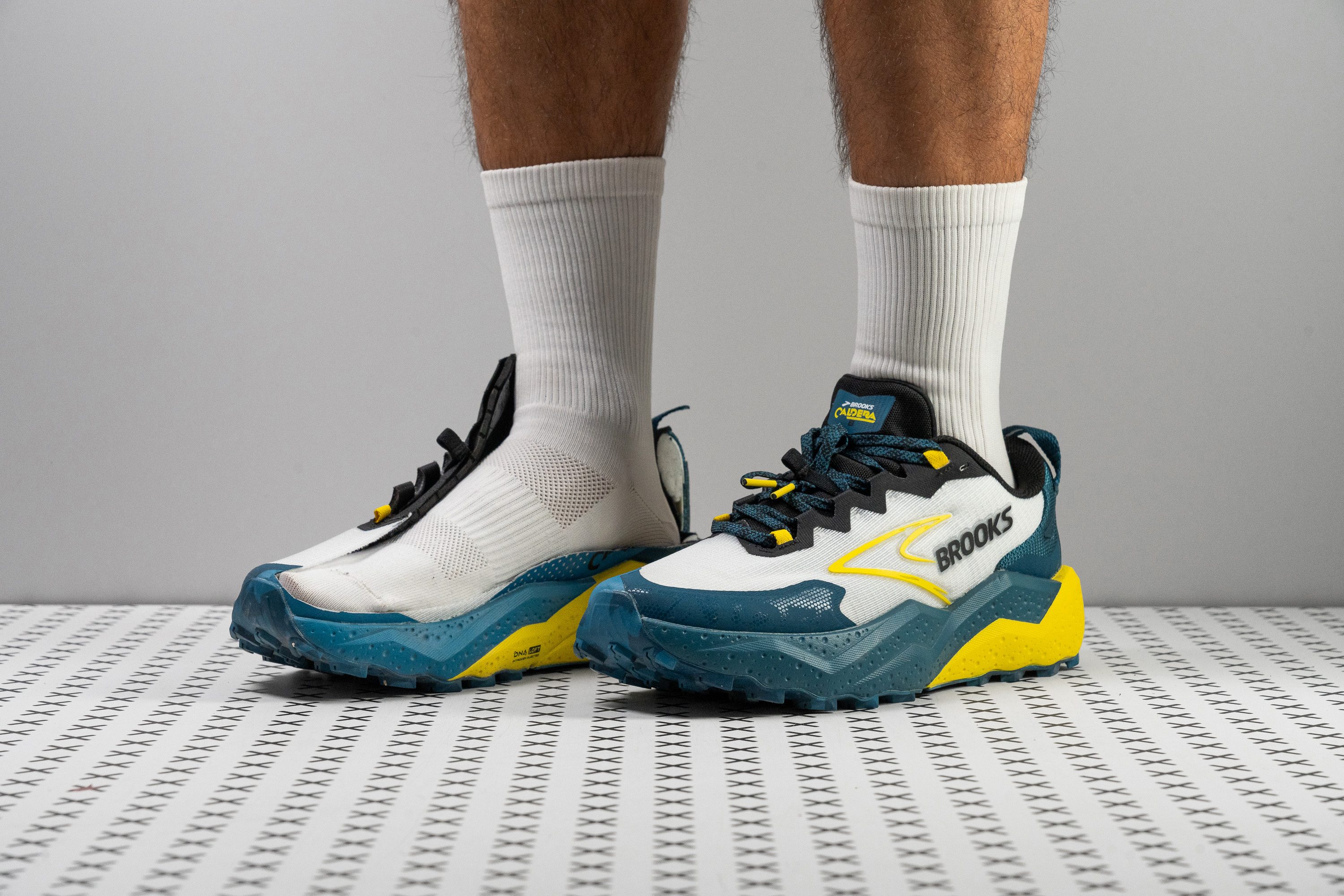














































What makes it the best?
The Brooks Caldera 8 offers well-planted footing through its oversized build, strong lateral containment, and dependable traction. Lab assessments confirm its twist resistance and the presence of versatile lugs underfoot, while the cushioned base dampens impact. Overall, it’s our best stability trail walking shoe.
The midsole’s stable ride comes from its broad platform and tall sidewalls, which generate tons of torsional rigidity as seen in its 5/5 rating. We measured the base to be wider than average at 116.6/104.0 mm, giving us lots of room to find our footing securely.
Its TrailTack technology in the outsole and 3.6 mm lugs work well on most paths. Nothing to complain about here!
We can go the distance with its comfortable cushioning. It reaches an above-average stack height of 36.7/27.9 mm. Meanwhile, the heel reached an impressive 129 SA rating in our shock absorption test, proving it reduces the forces of each landing.
Because of its size and high torsional rigidity, we didn’t feel too agile on twisty terrains. We recommend exploring other options for technical trails.
Pros
- Outstanding stability
- Comfortable, smooth ride
- Versatile on easy and moderate terrain
- Secure, reliable lockdown
- Fair and reasonable price
- Dependable traction
- Cleaner, more refined look
Cons
- Still heavy
- Needs more cushioning
- Bulky, overly wide heel
- Only for slow paces
Best Best city-to-trail walking shoes
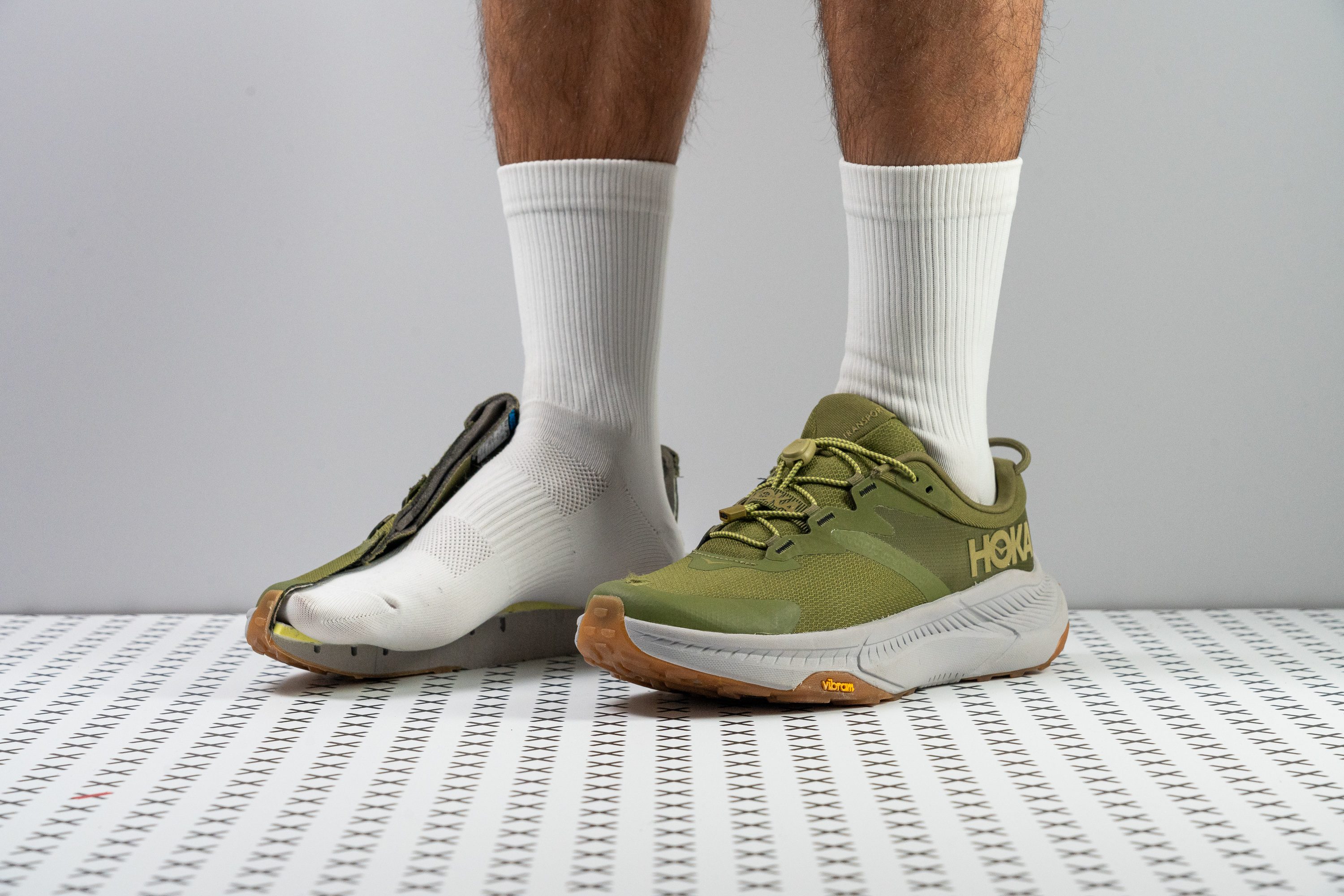





































What makes it the best?
Hoka Transport is unmatched as the number one city-to-trail option among trail walking shoes. Our minds were blown, to say the least, by how it performed superbly when we subjected it to the unpredictability of off-road walks. Protection, sturdiness, water tightness, surefootedness, and above all, comfort - Transport didn’t fall short of anything. In fact, it over-delivered that we felt so trail-equipped, we didn’t need anything more!
Even though we tackled ruggedness and harshness out on the trail, Transport didn’t bail on us. Instead, it remained in a pristine condition. When we headed back to our lab, our Dremel test validated our judgment. Pressing it against the toebox, it held great against the abrasion, scoring 4/5 in durability. Additionally, we measured the outsole’s hardness as 81.9 HC, which is 5.0% firmer than average, indicating robustness.
Apart from toughness, we also never worried about soggy feet when crossing streams. We put Transport’s upper under our microscope, and we observed an extremely interlaced fabric, making it perfect for trail-walking in rain and snow. And the fact that Transport has an outstanding grip, which kept us from stumbling even on wet rocks, well, is just the icing on the cake.
However, we couldn’t vouch for Transport when it comes to lightness. Our scale recorded a 10.9 oz (309g) weight, which is 7.3% heavier than average. If you seek something lighter, this isn’t it.
Pros
- Well-cushioned for all-day wear
- Spacious toe box
- Superior traction
- Reliable outsole durability
- Easy to slip in and out
- True-to-size fit
- Easy to clean
- Sustainable
Cons
- Not great for warm weather
- Squeaky during break-in
Best trail walking shoes with a wide toebox

















































What makes it the best?
Our experience with the Altra Experience Wild 2 is a delight because it has a lot of room for our feet, and it has a lot of give for bending. Lab tests verify its versatility through its light and malleable midsole, making it our trail walking shoe with the best wide toebox.
We comfortably rested all five of our toes during our treks, even if we’re wearing thick socks. We poured in our gel mold and solidified it to measure the widest part of the toebox, and we recorded a massive 83.3 mm compared to the 74.6 mm average. Indeed, it has a non-tapered fit.
Despite its generous room, it maintains a minimal 9.4 oz (266g) figure, 8.0% below average. Its lightness helps prevent fatigue since it takes less energy to move around.
Moreover, we barely have to fight the midsole to bend our feet. Our flex test shows it’s 26.0% more malleable than average, boosting both comfort for long hours of wear and versatility for different activities.
Note that it features a low 6.1 mm drop, which some people may find unnatural when walking. Those who prefer a more classic ride or have lower leg muscle issues should find a pair with a steeper offset.
Pros
- Extremely roomy toebox
- Very stable ride, especially up front
- Beginner-friendly drop for Altra newcomers
- Flexible build with natural feel
- Impressive durability across the board
- Noticeably lighter than version 1
- Improved heel retention
- Better lacing system
- Same price as before
Cons
- Bad energy return
- Limited ventilation
- Non-gusseted tongue
- Not for narrow feet
Best budget trail walking shoes












































What makes it the best?
We felt confident taking the ASICS Gel Venture 10 anywhere with its grippy ground control and impressive wear resistance. It’s the kind of shoe to wear and forget because of its fluid ride. And, it doesn’t break the bank with its $80 price! With a 45.9% discount vs. the average lab-tested trail shoe, it’s definitely our best budget pick.
It’s not only its price that is forgiving, but its midsole too. Moving feels easy because the shoe adapts to our foot flexion with ease. Our bend test verifies it’s 10.6% more flexible than the average.
Underfoot, we measured 3.7 mm lugs that we found versatile enough for moderate trails and occasional technical sections. They’re arrow-shaped and larger in the heel for braking during descents and smaller in the forefoot for enhanced control.
We also tested the outsole for wear resistance, and it performed well with 33.3% less damage than average, a standout result since it’s more durable than expensive counterparts.
However, it falls short in shock absorption and prioritizes ground connection. Those seeking maximum joint protection should go for a more cushioned pair.
Pros
- Fantastic durability
- Amazing value
- Ideal for beginners
- Softer Amplifoam midsole
- Versatile for trail, travel, casual wear...
- Improved upper
- Plush tongue with pressure-free lacing
- Trail-inspired details at budget price
Cons
- Only for narrow feet
- Heavy
- Low shock absorption and energy return
There’s a lot of hype around trail running these days. We think that’s awesome because trail running is a fun and fast-paced way to enjoy the outdoors. But it’s not for everyone. What about the folks who prefer trails but don’t want to run?
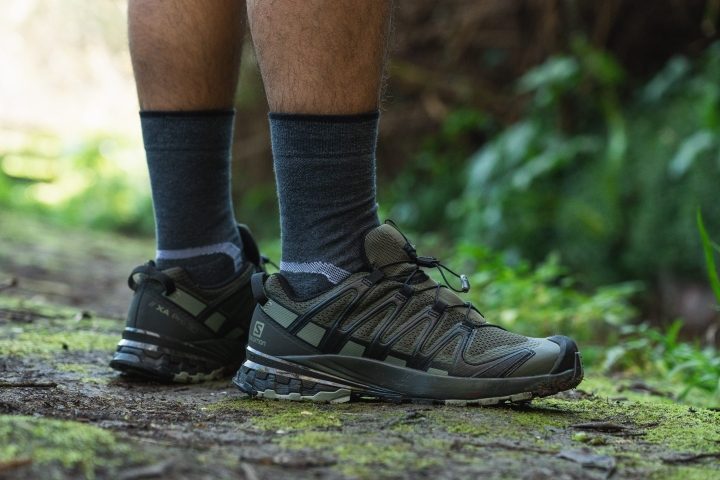
That’s where trail walking shoes come into play. Trail walking shoes meet at the intersection of the classic comfy tennies shoe you are used to and the rugged hiking shoe. They perfectly blend components of both shoes to create a shoe ideal for long walks off-pavement, and they could probably handle some running, too, if you were feeling frisky.
Let’s take a look at some of the best trail walking shoes and what makes them so special.
Trail shoes are different from tennis shoes
At first glance, trail walking shoes look a lot like regular old tennis shoes. However, if you get into the weeds, you’ll realize that some important characteristics of trail shoes differentiate them from tennis shoes.
The outsole is more rugged and grippier
First off, shoes designed to be used on trails and off-pavement are equipped with a more rugged outsole. In particular, trail walking shoes have outsoles with bigger and deeper lugs. This helps them provide traction on various surface types like gravel, dirt, and even snow or ice.
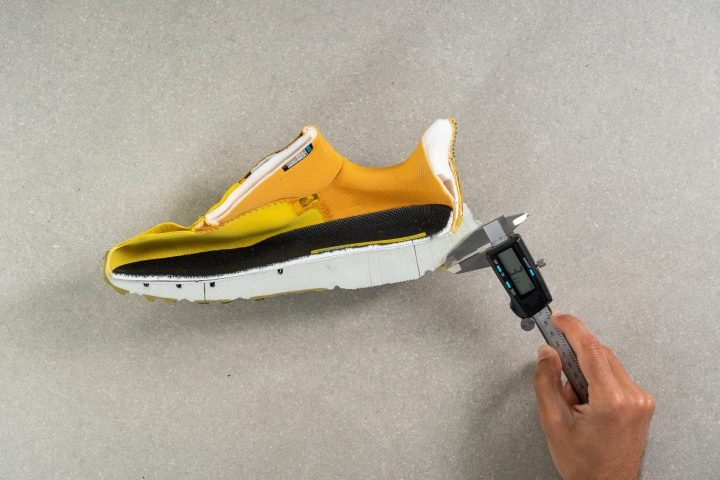
Trail shoe manufacturers also use specially designed rubber compounds that excel on trails. For example, the Saucony Peregrine features Saucony’s PWRTRAC rubber in the outsole to ensure maximum traction on rugged terrain.
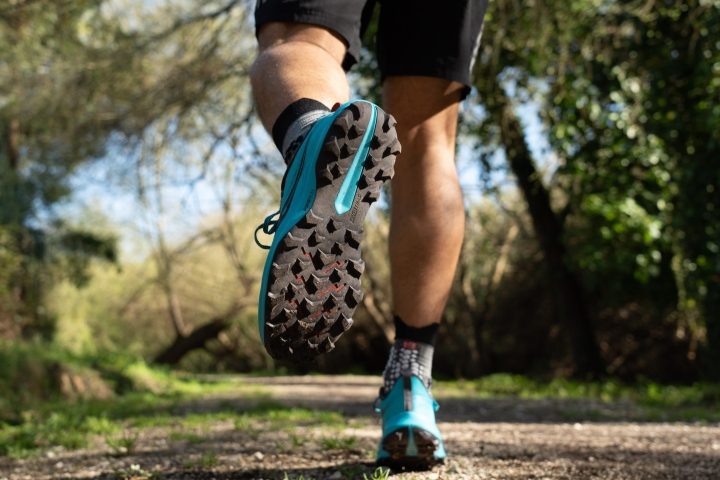
Some may be waterproof
Adventures out on the trail don’t stop because it’s raining. Well, maybe they do if it's torrentially down-pouring. But if you are caught in the rain with a pair of waterproof trail walking shoes, then you can continue with confidence, knowing that your feet will stay dry.
If you live in a location with a precipitous climate and are frequently going out with some sort of precipitation falling from the sky, whether it be a light drizzle, snow, or a legit rainstorm, then you probably ought to consider waterproof trail shoes.
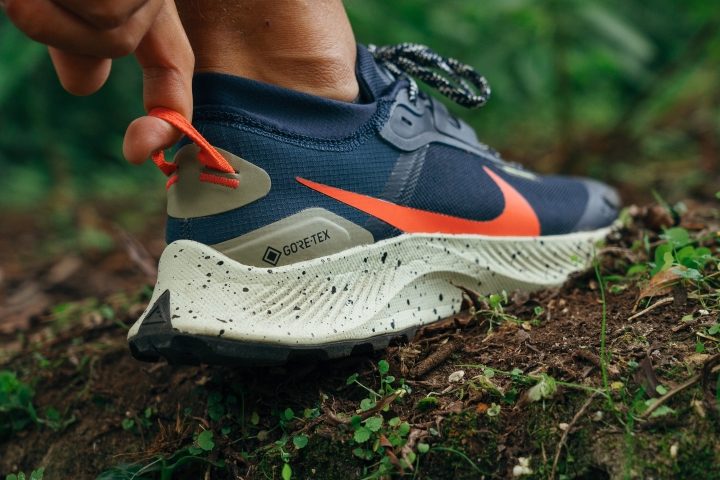
For example, some shoes feature the popular GORE-TEX membrane in their interiors which helps to seal out water.
Special features protect your feet
It’s no surprise that the terrain on hiking trails is significantly more rugged than paved walking trails and sidewalks in the city. Therefore, many trail hiking shoes have special features that help protect your feet from rocks and roots while out on the trail.
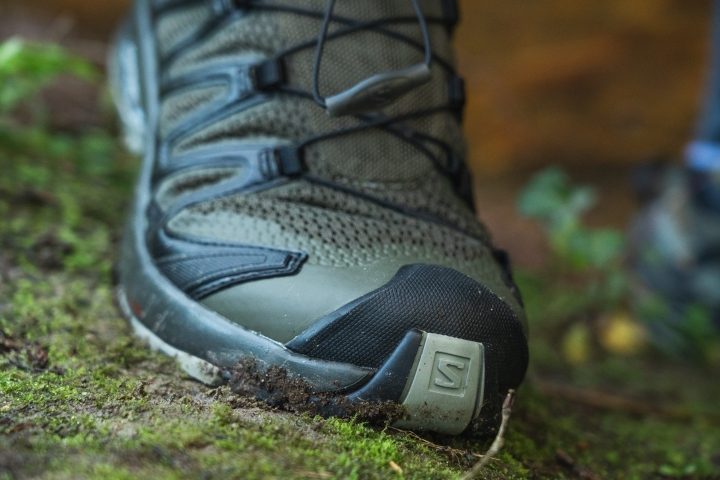
The Salomon XA Pro 3D is one of the most protective trail walking shoes we found. It features a robust toe guard that protects your feet from the inevitable toe-bashing you’ll receive on tough trails. Plus, Salomon’s 3D chassis is super beefy, protecting your feet while steeping on sharp stones or tree roots.
The midsole is designed to absorb intense impacts
One of the most important components of tail walking shoes is the midsole. The shoe's midsole is responsible for cradling and supporting your feet as you trudge along the trail. The midsole is also in charge of absorbing vibration and intense impacts so that your feet remain protected.
In most trail walking shoes, this is possible thanks to ethylene-vinyl acetate (EVA) foam. In a lot of ways, EVA foam is the ideal material for midsoles– it's lightweight, impact-resistant, relatively durable, and supportive.
The midsole on the Hoka Transport is made with EVA foam, and it’s compression molded which typically contributes to durability. This means a block of EVA foam is compressed into one of Hoka’s specially designed molds. Plus, the Transport midsole is made from 30% recycled sugarcane, creating a new standard for sustainable cushioning.
Trail walking shoes come with trail-ready special features
In the previous section, we discussed in detail some of the larger core characteristics that differentiate trail walking shoes from traditional walking shoes, like tennis shoes.
Below, we want to add to the list of important differences. However, this time, we walk to point out some unique features that some trail walking shoes have that not only make them different from traditional walking shoes but also separate them from the rest of the pack.
Essentially– we want to point out some intelligent footwear features that make your time on the trail even more enjoyable.
Lace garage
In a normal walking scenario, it doesn’t matter how your laces are housed, or unhoused for that matter. However, on traill, in walking, hiking, or running scenarios, it's extra nice to have your shoelaces neatly tucked away.
Lave garages are essentially additional components on the exterior of the shoe’s tongue that accommodate the excess from your laces after you’ve tied your shoes. That way, your laces cannot flop away and get in your way.

This may seem like an unnecessary luxury, but once you experience the svelteness of tucked-away laces, you’ll realize how you prefer it.
The Salomon XA Pro 3D V8, On Cloudvista, and Hoka Transport each have lace garages where you can make your laces “disappear.”
Reflective materials
Not all walks occur during the daylight. Sometimes, it’s nice to go out after dark to avoid hotter temperatures, enjoy quieter trails, and star gaze. Sometimes, we get ahead of ourselves and end up coming home after dark.
Regardless of the scenario, it’s nice when your shoes have reflective components that shine brightly in the dark. That’s because reflective materials help keep you safer by allowing others to more easily see you.
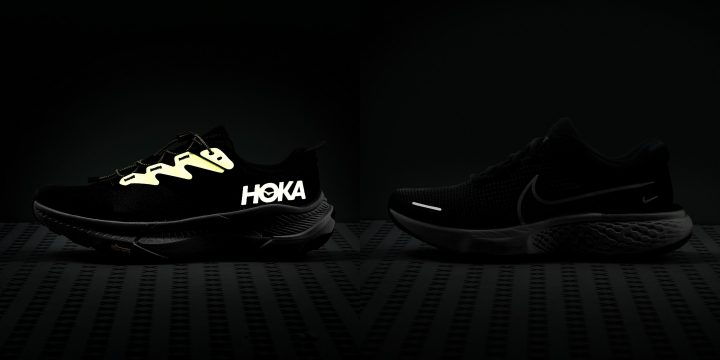
Quicklace closure system
A lot about footwear has changed over the years, including the closure systems. Even though lace-up closure systems seem to be the tired and true closure system, trail walking shoe manufacturers have managed to up their game.
Quicklace closure systems have become increasingly popular for trail shoes. Quicklace closure systems look a lot like traditional lace-up systems. The main difference is that instead of tying two laces together in a knot, you simply pull on a single attachment point that cinches down all the laces simultaneously.
Quicklace closure systems are particularly helpful for rapid transitions to and from the trail.

Gusseted tongue
Another special touch that differentiates trail walking shoes from all the rest is the gusseted tongue. Gusseted tongues look like traditional tongues. However, their construction and function are different (and much better, in our opinion).
Gusseted tongues are sewn into the shoe's interior. In other words, there is no separation between the tongue and the upper of the shoe. By removing the gap left behind by traditional tongues, shoe manufacturers effectively integrate the tongue directly into the shoe, helping eliminate the possibility of dirt, debris, and precipitation entering the shoe’s interior.
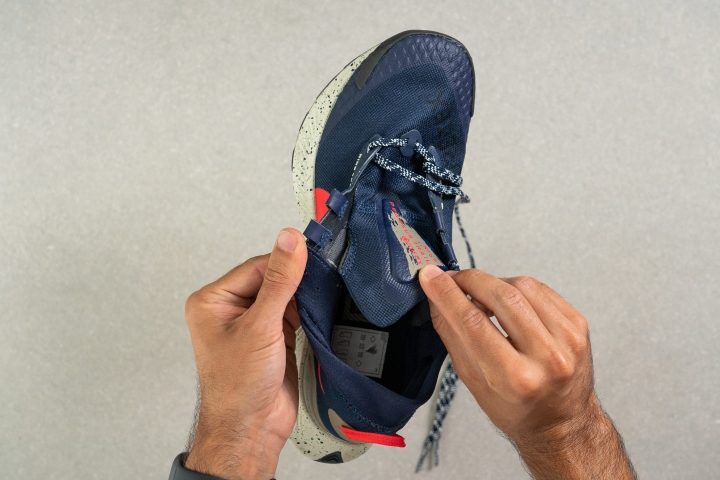
Because the weather and trail conditions can be so variable when you are outside exploring, it's really nice to have the little extra layer of protection that gusseted tongues provide.




